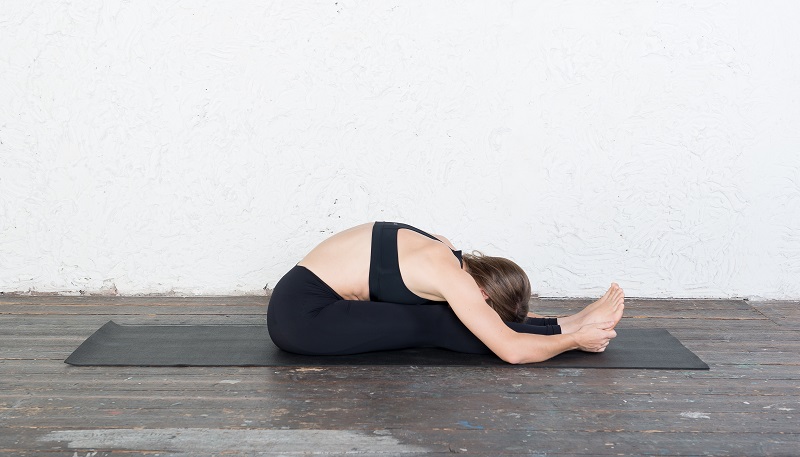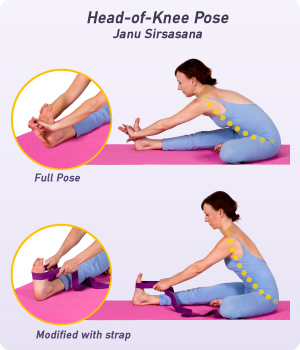Yoga Seated Forward Bends for Beginners

Hey there, budding yogis! Do you yearn to fold forward with the finesse of an accordion but feel more like a rusty hinge? Well, you've come to the right place! Today we're diving into the gentle world of seated forward bends – a beginner-friendly slice of yoga bliss that’s about to become your go-to for unwinding after a bustling day. Sit down, take a deep breath, and let's unfold into relaxation together with EverydayYoga guiding us through every bend and stretch.
Why Seated Forward Bends Are Fab
Seated forward bends are the superstar stretches of the yoga world, offering a myriad of mellow benefits for yoga newbies. Not only do they give those hammy's some tender loving care, but they also wave a magic wand over your spine, whispering sweet nothings of calm and tranquillity to your nervous system. A forward fold a day keeps the stress at bay!
Caution
Do not practice these poses if you are currently suffering from diarrhea. Women who are pregnant should also avoid practicing this sequence. Students with back, neck, or shoulder injuries, and those with degenerative disc disease, should only practice these poses under the guidance of an experienced and knowledgeable teacher. Always work within your own range of limits and abilities. If you have any medical concerns, talk with your doctor before practicing yoga.
The Sequence
Practice these poses 3-5 times a week. It should take about 15 minutes to complete all of the poses. Take it slowly. Never force your body into any position. If you feel any sharp, pinching, or jarring pain, come out of the pose immediately and rest. Always keep in mind these general guidelines when practicing yoga:
- Move slowly in and out of the poses.
- Keep your breath smooth and even throughout the practice.
- Practice with an empty stomach.
- Never strain or force yourself beyond your current abilities.

Getting Bendy: A Step-by-Step Guide for Beginners
Let’s walk through some seated forward bends that will have you feeling like a rejuvenated rubber band in no time:
1. Easy Pose with Forward Fold

Sometimes called "Simple Cross-Legged Forward Fold" — Adho Mukha Sukhasana (AH-doh MOO-kah soo-KAHS-uh-nuh) — this pose calms the mind while stretching the shoulders, back, hips, knees and ankles.
- Sit on the edge of a firm blanket, crossing your legs in front of you at the shins. If your hips are very tight, you can sit on a bolster or block.
- Balance your weight evenly across your sit bones. Align your head, neck, and spine. Lengthen your spine, but soften your neck. Relax your feet and thighs.
- Reach your arms up overhead, lengthening your spine.
- On an exhalation, slowly bow forward with your arms still extended. Rest your arms, hands, and forehead on the mat. If your forehead does not touch the mat, bend your elbows, stack your hands, and rest your forehead on your hands. You can also rest your forehead on a pillow or bolster.
- Hold for up to five minutes.
- To release, use your hands to walk yourself back to an upright, seated position. Change the cross of your legs and repeat the pose.

Head-of-Knee Pose — Janu Sirsasana (JAH-noo sheer-SHAH-suh-nuh) — stretches the hamstrings, groins, and spine. It also calms the mind, relieving anxiety, fatigue, and mild depression.
- Sit on the edge of a firm blanket with your legs extended in front of you. Bring the sole of your left foot to the inside of your right thigh.
- Align the center of your torso with your right leg (a mild twist). Keeping your spine long, exhale and hinge forward from the hips to fold over your right leg. Imagine your torso coming to rest on your right thigh rather than reaching your nose toward your knee (so, bend at your waist). Draw your right thigh down and flex your right foot.
- Hold onto your right leg's shin, ankle, or foot. You can also wrap a yoga strap or towel around the sole of your right foot, holding it firmly with both hands.
- Keep the front of your torso long; do not round your back. Let your belly touch your thigh first, and then your chest. Your head and nose should touch your leg last.
- With each inhalation, lengthen the front torso. With each exhalation, fold deeper.
- Hold for 30 seconds. To release the pose, draw your tailbone toward the floor as you inhale and lift your torso. Extend your left leg. Then repeat the pose on the opposite side.

Traditional yoga texts say Seated Forward Fold — Paschimottanasana (PAH-shee-moh-tun-AHS-uh-nuh) — can cure disease. Modern yoga teachers agree this calming forward bend, literally translated as "Intense West Stretch," helps to relieve stress and reduce fatigue. It stretches the spine, shoulders, and hamstrings. Additionally, it is reputed to be therapeutic for high blood pressure and infertility. Do not perform this pose if you have a back injury.
- Sit on the edge of a firm blanket with your legs extended in front of you. Beginners should bend the knees throughout the pose, straightening the legs only as flexibility increases.
- Inhale as you reach your arms out to the side, and then up overhead, lengthening your spine.
- Exhaling, bend forward from the hip joints. Do not bend at the waist. Lengthen the front of your torso. Imagine your torso coming to rest on your thighs, instead of tipping your nose toward your knees.
- Hold onto your shins, ankles, or feet — wherever your flexibility permits. You can also wrap a yoga strap or towel around the soles of your feet, holding it firmly with both hands. Keep the front of your torso long; do not round your back. Let your belly touch your legs first, and then your chest. Your head and nose should touch your legs last.
- With each inhalation, lengthen the front torso. With each exhalation, fold a bit deeper.
- Hold for up to one minute. To release the pose, draw your tailbone towards the floor as you inhale and lift the torso.
4. Child's Pose

Often used as a resting position, Child's Pose — Balasana (bah-LAHS-uh-nuh) — helps to stretch the hips, thighs, and ankles, while also reducing stress and fatigue.
- Start on your hands and knees. Then spread your knees wide while keeping your big toes touching.
- Exhale as you bow forward, letting your torso drape between your thighs.
- Keep your arms long and extended. Place your forehead on the floor. Then bring your arms to rest alongside your thighs, with your palms facing up.
- If your forehead doesn't touch the floor, bend your elbows and stack your hands or fists, providing support for your head. Let go of any neck tension.
- Hold for up to one minute or longer, breathing softly. Then, gently press yourself up into a seated position.
Breathe and Bend: The Secret Sauce
The real magic? Your breath! Breathe into each bend, and ride the wave of your own soothing inhales and exhales. It's like you’re mixing chill vibes with oxygen – and serving it up fresh with every breath.
:max_bytes(150000):strip_icc()/Verywell-11-3567193-SeatedForward-986-5c54a76246e0fb000152e740.jpg)
Roll up Your Sleeves!
There you have it, amazing apprentice stretchers! Seated forward bends for beginners are an invitation to slow down and feel every stretchy sensation. Embrace the bends, cherish the journey, and remember – a forward fold is a hug you give yourself. With EverydayYoga by your side, every day can be a toe-touchingly terrific adventure!
Ready to share your first forward fold experience or have any bendy breakthroughs to gush about? Drop your stories and questions below, and let’s create a space where every beginner can grow into a forward bend aficionado. Stay bendy, stay breezy, and above all, stay beaming with those forward fold vibes! 🌟🌈🧘♀️
See you on the mat!

